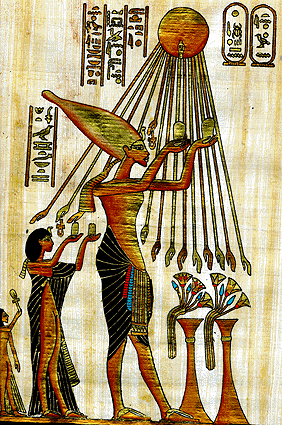|
1
2
|
| Name ▲▼ | Origin ▲▼ | Description ▲▼ |
|---|---|---|
| Spirit name "Ovda" | Finnish | An evil spirit of the Forest who appears naked with backward pointing feet. After being danced to death, the victim is eaten. Finnish |
| Goddess name "Sao Ching Niang Niang" | Chinese | Mother goddess. One of the nine dark ladies of the pantheon who adopt a protective role. She removes Rain clouds when they threaten to flood crops.... |
| Monster name "Shita" | Hopi | A large monster who lived somewhere in the west, and used to come to the village of Oraibi to devour children. Often also grown people were eaten by the monster. The people became very much alarmed over the matter, and especially the village chief was very much worried over it. Finally he concluded to ask the Pookonghoyas for åśśistance. Hopi. |
| Goddess name "Sif" | Nordic / Icelandic / / Germanic | corn goddess. The consort of THOR. She is mentioned in the Eddaic Lay of Lokasenna and in the Lay of Har barth. According to Snorri Sturluson she was originally a prophetess called Sibyl. She possesses great beauty and has long golden hair. Her sons are ULL and Loridi. According to tradition, LOKI cut off Sif's hair in mischief, but when confronted and threatened by Thor, he had the dwarfs make her a magical hairpiece of pure gold which, when it touched her head, became a living part of her and grew.... |
| God name "Tatenen" | Egypt | Chthonic vegetation god, the apotheosis of the Nile silt Egypt |
| God name "Tatenen (exalted earth)" | Egypt | Chthonic god. Originates as a vegetation god from Memphis, the apotheosis of the Nile silt which appears after the inundation has subsided. As a vegetation god, he is depicted anthropomorphically with green face and limbs and wearing a crown with plumes subtended by ram's horns. By the time of the Old kingdom (twenty-seventh to twenty-second centuries BC) he is recognized as an emanation of the god PTAH, involved in the creation process and mentioned on the Shabaka Stone (Memphis), where he is described as father of the gods and is perceived as an androgynous being. He also protects the royal dead.... |
| Deities name "Titan" | Greek | A race of gods. The secondary group of deities in the pre-Hellenic pantheon, headed by the sky god OURANOS and the earth mother GAIA. They have six pairs of children: OKEANOS and TETHYS, KRONOS and RHEA, HYPERION and THEA, Koeos and Phoebe, IAPETOS and Klymene, Kreos and Eurybe. According to legend the children usurped their father but were eventually beaten by ZEUS, heading the major group of the pantheon, who hurled them into the abyss of Tartaros.... |
| Goddess name "Tzu Sun Niangniang" | Chinese | Mother goddess. One of the nine dark ladies of the pantheon who are regarded as having a protective role. She was the mortal wife of a minor official and, having borne him five sons and two daughters, committed suicide in order to ensure her future chastity. She is invoked at weddings to provide children, especially sons, and special cakes are eaten by the bride and groom. One of her more famous sanctuaries, on the island of Taiwan, is the Yin Yang Stone.... |
"Ualare" | New Guinea | The name for ancestors, ualare is that by which all sacred objects are designated. Certain animals are ualare, and as these were never injured or eaten. The Elema, Papuan Gulf, New Guinea |
| Deity name "Vitzilipuztli" | Aztec / Mesoamerican | Aspect of HUITZILPOCHTLI. Invoked twice a year, in May and December, during an agrarian festival. Virginal female worshipers created an image of the deity from dough consisting of maize flour, beet seed and honey. The image was given eyes and teeth using pieces of colored glåśś and whole maize seeds and was paraded, before being broken into pieces and eaten as a form of sacrament.... |
| God name "Willow Pattern" | s | The tradition. The mandarin had an only daughter named Li-chi, who fell in love with Chang, a young man who lived in the island home represented at the top of the pattern, and who had been her father's secretary. The father overheard them one day making vows of love under the orange-tree, and sternly forbade the unequal match; but the lovers contrived to elope, lay concealed for a while in the gardener's cottage, and thence made their escape in a boat to the island home of the young lover. The enraged mandarin pursued them with a whip, and would have beaten them to death had not the gods rewarded their fidelity by changing them both into turtle-doves. The picture is called the willow pattern not only because it is a tale of disastrous love, but because the elopement occurred "when the willow begins to shed its leaves." |
|
1
2
|
||

